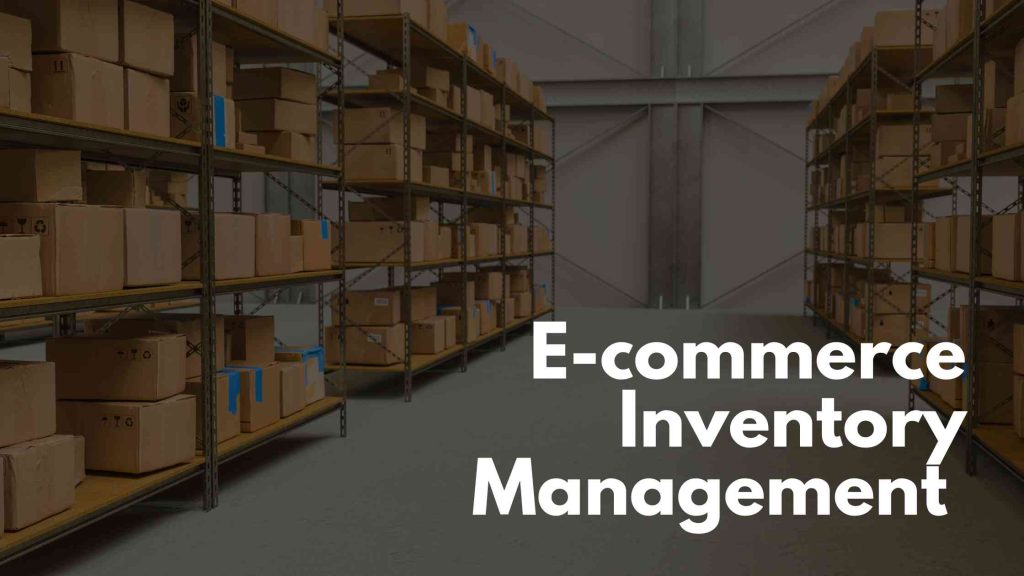E-commerce inventory management refers to the process of tracking, organizing, and controlling the inventory of products for an online store. It involves managing stock levels, monitoring product availability, and ensuring customers can purchase items without stockouts or delays.
Effective inventory management is crucial for running a successful e-commerce business. It helps prevent overselling or underselling of products, optimizes order fulfillment, minimizes carrying costs, and enhances the overall customer experience. Here are some critical aspects of e-commerce inventory management:
Centralized Inventory System
Utilize a centralized inventory management system that integrates with your e-commerce platform. This system should provide real-time visibility into stock levels, track sales, and automatically update inventory counts across all sales channels.
Accurate Product Tracking
Each product should have a unique identifier or SKU (Stock Keeping Unit) to track its movement and availability. Barcodes or QR codes can be used for efficient scanning and tracking.
Stock Replenishment
Regularly monitor inventory levels and set up automated notifications for low-stock or reorder points. It helps ensure timely replenishment to avoid stockouts.
Demand Forecasting
Analyze sales trends, historical data, and market demand to predict future inventory needs. It helps you plan for seasonal variations, promotions, or product launches and prevent overstocking or understocking.
Safety Stock
Maintain a stock level for popular or fast-selling items for unexpected demand spikes or restocking delays. This buffer stock ensures you can fulfill orders promptly and prevent customer dissatisfaction.
Inventory Classification
Categorize products based on demand, profitability, or turnover rate. It helps prioritize inventory management efforts, identify slow-moving or obsolete items, and optimize stock allocation.
Dropshipping or Third-Party Logistics
Consider using drop shipping or partnering with third-party logistics providers to reduce the burden of inventory management. With dropshipping, the supplier handles storage, packing, and shipping, while you focus on sales and marketing.
Return and Exchange Management
Have a streamlined process for handling product returns, exchanges, and refunds. It ensures accurate inventory reconciliation and helps maintain a positive customer experience.
Data Analysis and Reporting
Regularly analyze inventory data, sales reports, and performance metrics to identify trends, optimize stock levels, and make informed business decisions.
Integration with Other Systems
Integrate your inventory management system with other business tools like accounting software, order management systems, or customer relationship management (CRM) software to streamline operations and improve efficiency.
By implementing effective e-commerce inventory management practices, you can avoid stockouts, improve customer satisfaction, reduce carrying costs, and optimize your online store’s overall performance.
How Acumatica can help inventory management
ERP software with robust features to support business inventory management. With Acumatica, companies can streamline their inventory processes and gain better control over stock levels. Acumatica provides real-time visibility into inventory data, allowing businesses to track stock levels, monitor product availability, and manage multiple warehouse locations effectively. It offers advanced inventory management functionalities such as automated stock replenishment, demand forecasting, and safety stock calculations. These features help optimize inventory levels, reduce stockouts, and ensure timely fulfillment of customer orders.
Furthermore, Acumatica allows businesses to categorize products, set pricing and discount rules, and manage multiple pricing tiers. It helps accurately define product attributes, manage variations, and maintain consistency across sales channels.
Acumatica’s integration capabilities enable seamless communication between inventory management and other business functions like sales, purchasing, and finance. This integration streamlines processes, eliminates manual data entry, and provides accurate and up-to-date information across the organization.
Additionally, Acumatica offers comprehensive reporting and analytics tools that allow businesses to gain insights into inventory performance, identify trends, and make data-driven decisions. The system also supports barcode scanning and mobile inventory management, enabling efficient tracking and counting of inventory in real time.
Acumatica is a powerful ERP solution that can help businesses improve their inventory management processes. It provides end-to-end visibility, automation, and integration capabilities to optimize stock levels, enhance order fulfillment, and improve customer satisfaction.

Vijay comes with a vast experience in ERP and enterprise solutions space with about 20 years of experience in various packaged application like Acumatica, SAP, Orion, Salesforce.com, SugarCRM and, SalesLogix.

